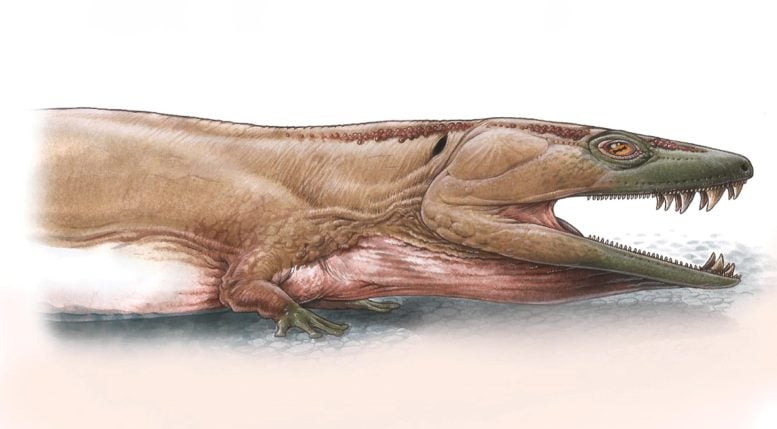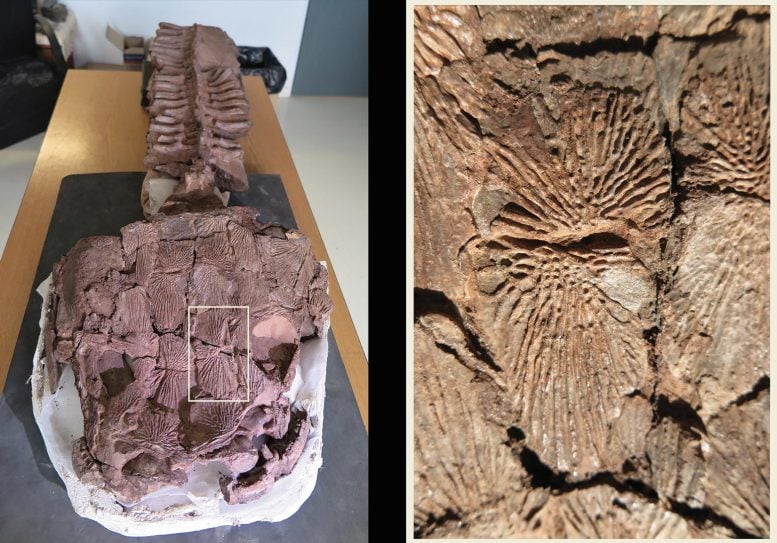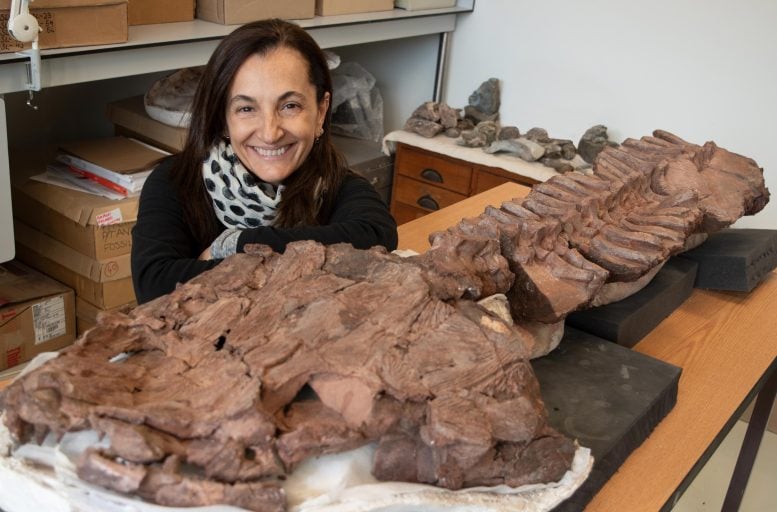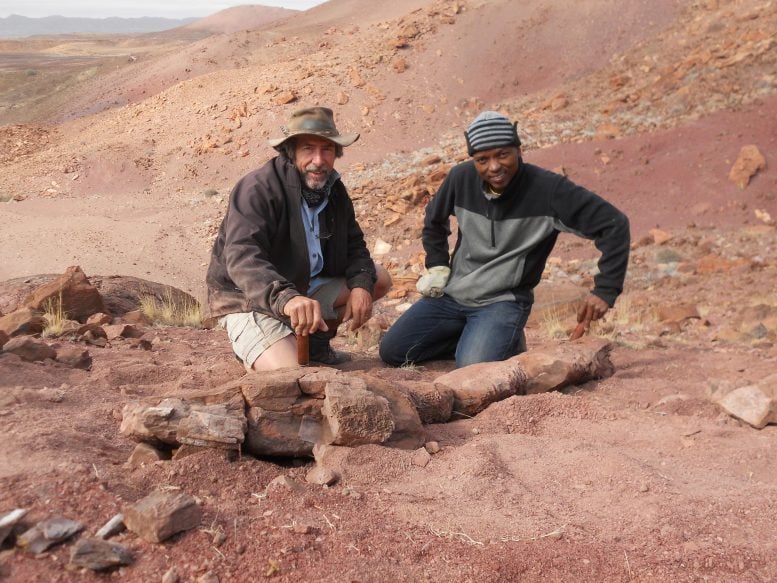
Researchers have unearthed a giant basal tetrapod fossil in Namibia, revealing new aspects of the early evolution of land animals and underscoring the importance of the southern continents in the study of these ancient species.
An international team of paleontologists has discovered a fossilized giant basal tetrapod in Namibia. Tetrapodsearly four-legged friends Vertebrates with fingers and toes, lived about 280 million years ago during the transition from aquatic to terrestrial life. These prehistoric carnivores are among the earliest ancestors of all modern animals. The almost complete, 3-meter-long skeleton, discovered in the Ugab River Valley in Damaraland, belongs to a new species called Gaiasia jennyae.
This groundbreaking discovery challenges the previous assumption that early tetrapods were found only in the Northern Hemisphere and offers new insights into the evolution of land animals.

Discovery of a new species
In their recently published study NatureThe team looked for evidence of the first four-legged animals setting foot on land on the ancient supercontinent Gondwana. Gondwana, which existed between about 550 and 180 million years ago, included what is now South America, Africa, Antarctica, Australia and India.
During their fieldwork in Namibia, the researchers discovered something exciting. “The almost complete skeleton was preserved in mudstone from an ancient freshwater lake. As the soft tissue decayed, gases were formed that caused calcium carbonate to crystallize around the bones. This created a hard crust that protected the bones from being crushed as they dug deeper into the earth,” explains Prof. Roger Smith, Distinguished Professor at the Evolutionary Studies Institute at Wits and Emeritus Research Fellow at the Iziko Museum in Cape Town.
Sibusiso Mtungata, a highly qualified fossil technician at the Iziko Museum, describes the moment of discovery: “We had found isolated vertebrae from something large, so we were looking for a more complete skeleton. I came across two round rock cylinders with bones in the middle that fit together – and then a third. I called Roger over to help me look for more, and as we walked up the slope he spotted a large flat stone that he recognised as the head. When we looked along the edge and saw rows of teeth, we knew we had finally found what we were looking for – a nearly complete skull and skeleton!”

The meaning of Gaiasia
Prof. Claudia Marsicano from the University of Buenos Aires, Argentina, explains the significance of the find. “When I saw this huge animal, I knew immediately that it was another species. There are no records of giant basal tetrapods from the Carboniferous-Permian period (about 299 million years ago) anywhere in the world, and certainly none from the southern continents that formed Gondwana. What struck me next was the structure of the front part of the skull, which protruded from the ground. It showed unusually interlocking large fangs.” It was an ambush predator that ate the fish that lived in the same lake.
Collecting the fossil took some time. “The skeleton had already weathered out of the rock, so no more excavation was needed, but the whole team spent hours looking for fragments that had fallen off the skull block and slid down the slope,” says Mtungata. The skeleton was then taken to the Iziko South African Museum in Cape Town to be painstakingly prepared at the Karoo Fossil Laboratory, a process that took two years. “The mechanical preparation was challenging because the skeleton was too big for a CT scan, so I didn’t know what to expect – especially on the palate, where there were teeth of all different sizes. And around the vertebrae there was up to 10 cm of rock that had to be drilled away, creating so much red dust that we need a special extractor,” explains Mtungata.

Analysis and exhibition
Fossil preparation revealed that the large, flattened skull was decorated with unusual patterns and had a unique palate structure. It had huge, backward-curving fangs in both the upper and lower jaws, making its mouth unlike anything seen before. At first it was thought to be a large amphibian, but further study showed that the skull bore features of much older, less evolved four-legged animals previously only found in older rocks in the Northern Hemisphere.
“We have the new way Gaiasia jennyae‘Gaiasia’ is named after Gaias, a nearby desert spring where the fossil was found. ‘Jennyae’ is a tribute to Professor Jennifer Clack, a world-renowned expert on the evolution of early tetrapods who passed away in 2020,” explains Smith.
The new findings strongly suggest that early tetrapods were already well established in the cold temperate regions of Gondwana during the Carboniferous-Permian transition. “This discovery challenges previous assumptions about the distribution and evolution of early tetrapods, which were largely based on fossils from the Northern Hemisphere,” says Marsicano. “Our research shows a well-established early Permian fauna, with Gaiasia as an apex predator in rocks from high latitude Gondwana, which is now central Namibia. This challenges previous ideas and proves that the early history of tetrapods in Pangaea during the Paleozoic was much more complex than we thought.”
The specimen was returned to Windhoek, where it will soon be exhibited in the Geological Museum of Namibia.
Reference: “Giant stem tetrapod was apex predator in Gondwanan late Palaeozoic ice age” by Claudia A. Marsicano, Jason D. Pardo, Roger MH Smith, Adriana C. Mancuso, Leandro C. Gaetano and Helke Mocke, July 3, 2024, Nature.
DOI: 10.1038/s41586-024-07572-0
Funding: This research was funded by PAST Africa and the National Geographic Society.



